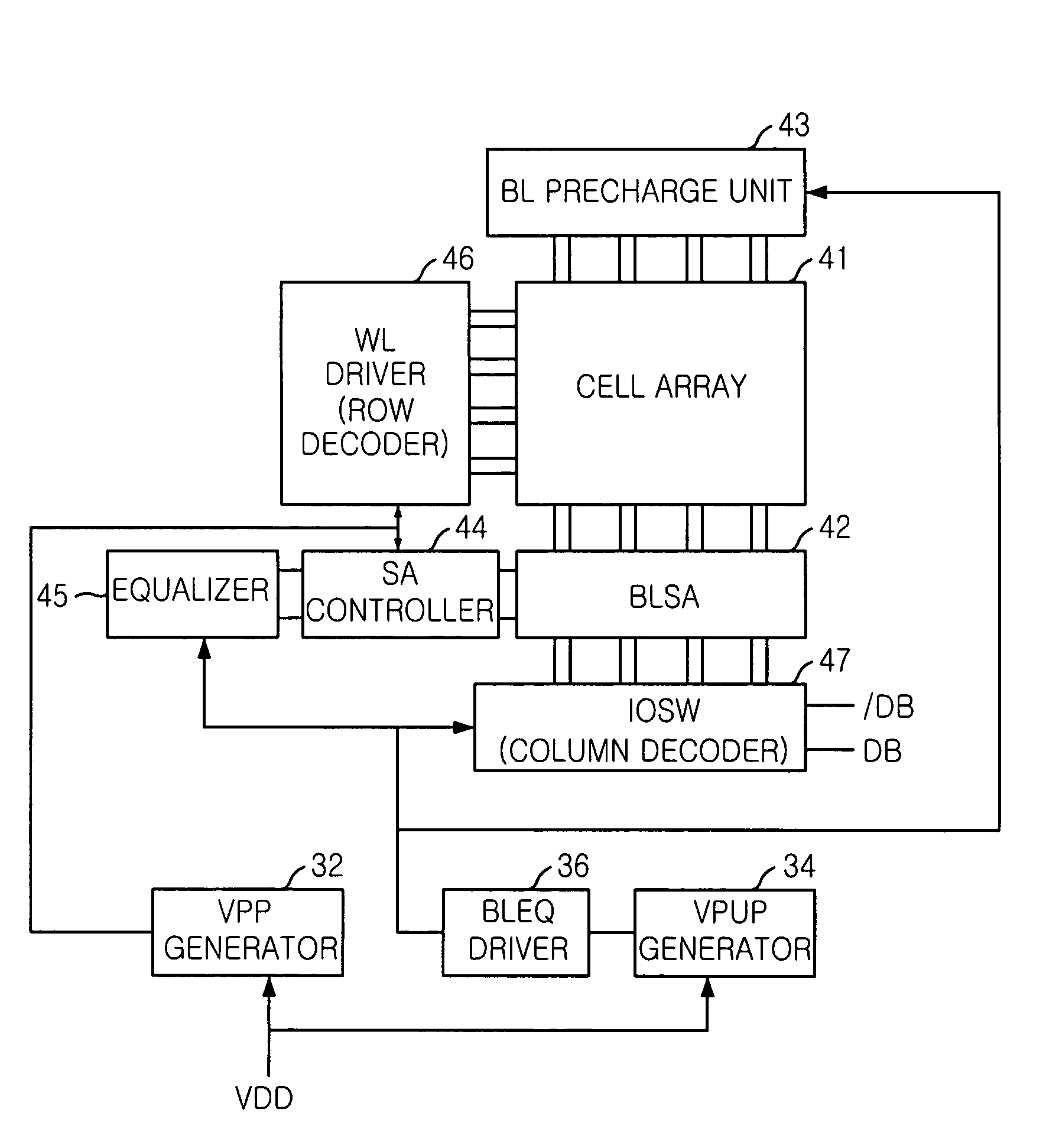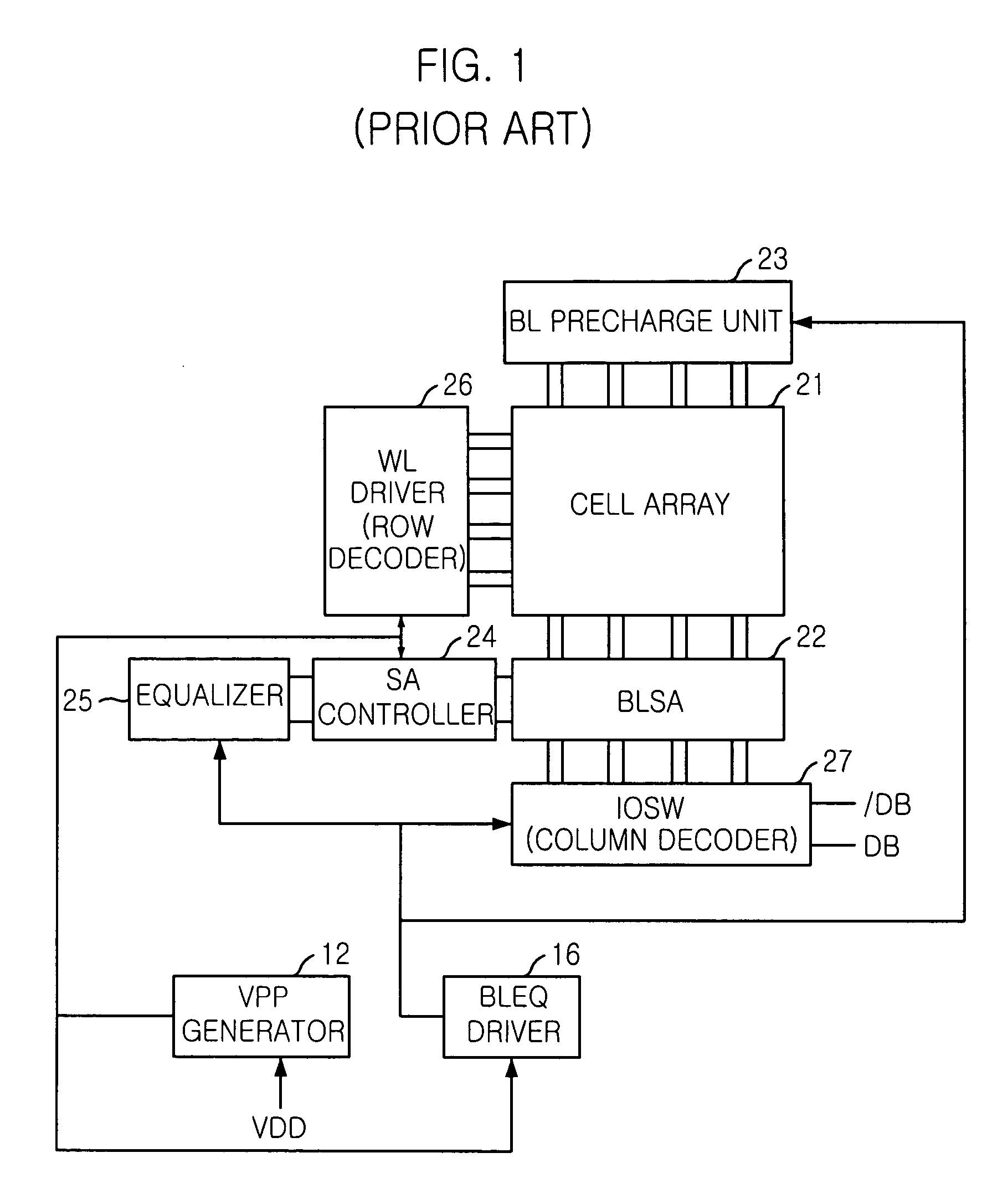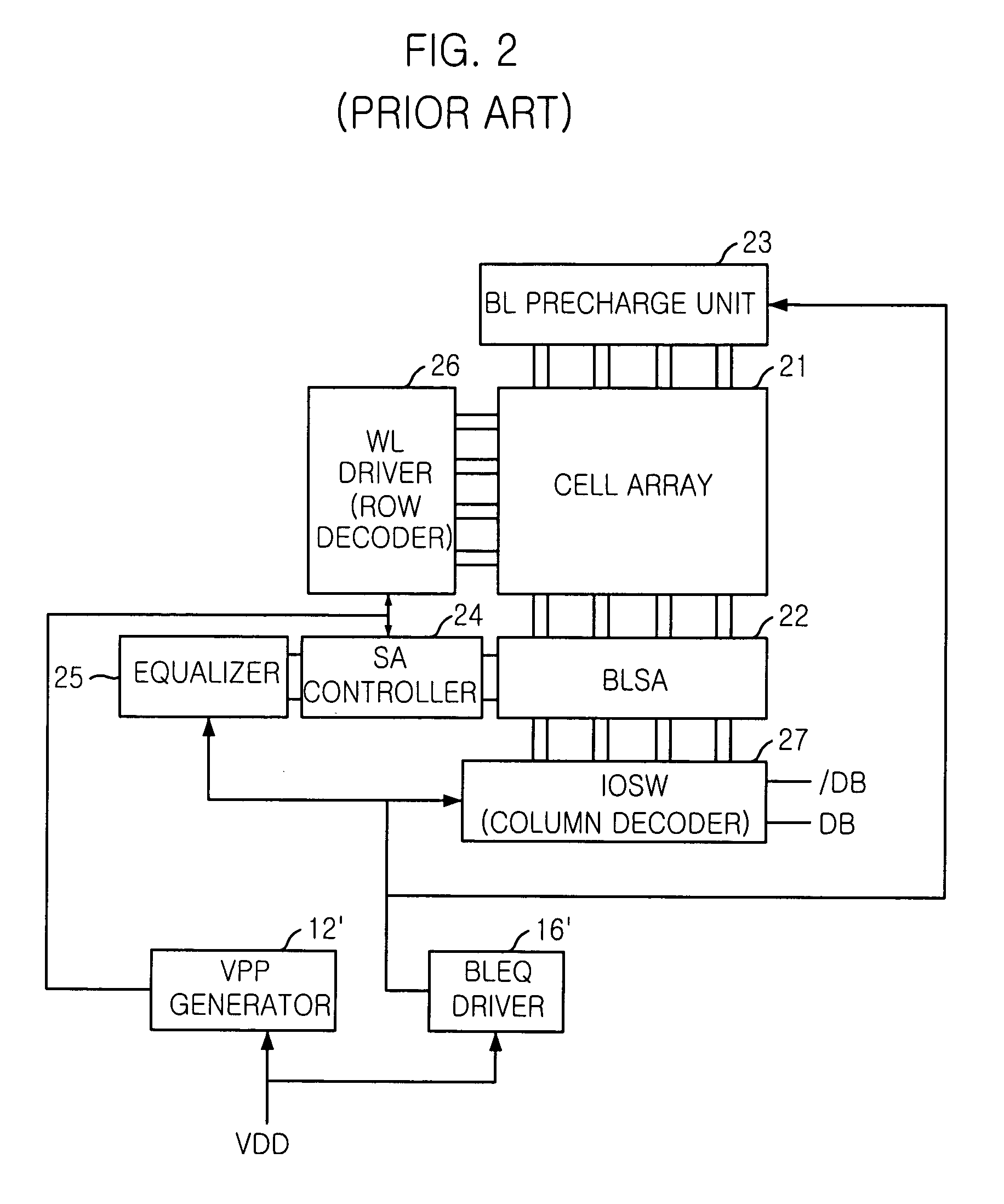BLEQ driving circuit in semiconductor memory device
a driving circuit and semiconductor technology, applied in the direction of information storage, static storage, digital storage, etc., can solve the problems of reducing the driving performance of the boosted voltage vpp, affecting the performance of the memory cell, and consuming low power, so as to prevent the deterioration of trp performance and current waste
- Summary
- Abstract
- Description
- Claims
- Application Information
AI Technical Summary
Benefits of technology
Problems solved by technology
Method used
Image
Examples
Embodiment Construction
[0030]Hereinafter, with reference to the drawings, some of the preferred embodiments of the present invention will be explained in detail.
[0031]FIG. 3 shows a block diagram of a memory device in accordance with a first embodiment of the present invention.
[0032]The memory device described in FIG. 3 includes a core area, a first boosted voltage (VPP) generator 32, a second boosted voltage (VPUP) generator 34 and an equalization signal (BLEQ) driver 36.
[0033]Herein, the core area includes a cell array 41, a bit line (BL) precharge unit 43, a bit line sense amplifier (BLSA) 42, a word line (WL) driver 46, a sense amplifier (SA) controller 44, an equalizer 45 and an input / output switch (IOSW) 47.
[0034]The cell array 41 consists of a plurality of memory cells in which data are stored and the bit line (BL) precharge unit 43 adjusts a pair of bit lines with a precharge voltage. The bit line sense amplifier (BLSA) 42 amplifies voltage difference of the bit lines induced by a storage value of...
PUM
 Login to View More
Login to View More Abstract
Description
Claims
Application Information
 Login to View More
Login to View More - R&D
- Intellectual Property
- Life Sciences
- Materials
- Tech Scout
- Unparalleled Data Quality
- Higher Quality Content
- 60% Fewer Hallucinations
Browse by: Latest US Patents, China's latest patents, Technical Efficacy Thesaurus, Application Domain, Technology Topic, Popular Technical Reports.
© 2025 PatSnap. All rights reserved.Legal|Privacy policy|Modern Slavery Act Transparency Statement|Sitemap|About US| Contact US: help@patsnap.com



